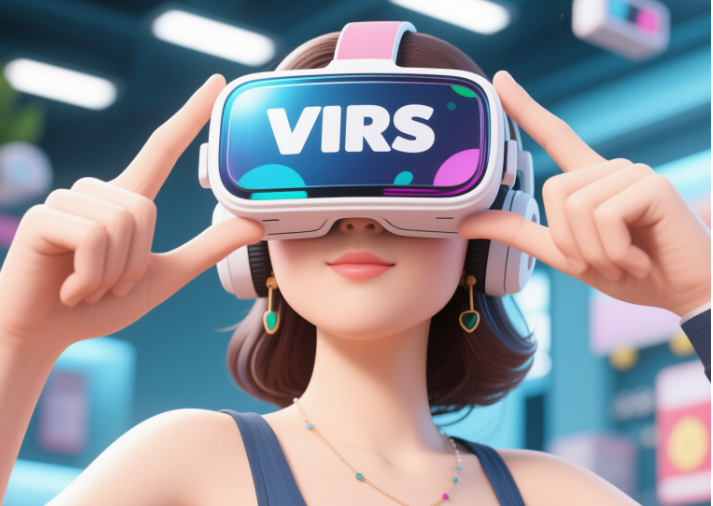Virtual AR Commerce—an innovative blend of virtual reality (VR), augmented reality (AR), and e-commerce—is reshaping how consumers interact with brands and make purchasing decisions. As technology evolves, this hybrid model is not just a niche trend but a transformative force in the global economy. By merging the physical and digital worlds, Virtual AR Commerce offers immersive shopping experiences that bridge the gap between online convenience and offline engagement, making it a focal point for businesses and investors alike.
Understanding Virtual AR Commerce: Key Technologies and Drivers
At its core, Virtual AR Commerce leverages AR to overlay digital content onto the real world (e.g., allowing users to visualize furniture in their homes via a smartphone camera) and VR to create fully immersive virtual environments (e.g., virtual storefronts where users navigate as avatars). These technologies are fueled by advancements in:
- 5G Connectivity: Faster data speeds enable seamless, low-latency AR/VR experiences.
- AI and Machine Learning: Personalized recommendations and real-time analytics enhance user engagement.
- Wearable Devices: Smart glasses (e.g., Apple Vision Pro, Meta Quest) and AR headsets are democratizing access to immersive tech.
According to a Statista report, the global AR/VR market is projected to reach $146.3 billion by 2026, with retail and e-commerce emerging as primary adoption sectors. Brands are increasingly investing in Virtual AR Commerce to combat online shopping’s biggest drawback: the inability to physically interact with products.
Real-World Applications: How Brands Are Embracing Virtual AR Commerce
Virtual AR Commerce is already driving innovation across industries:
1. Fashion and Apparel: Try-Ons Without Fitting Rooms
Brands like Nike and Gucci have launched AR-powered virtual fitting rooms, allowing users to “try on” sneakers or luxury bags via their devices. This reduces return rates (estimated at 20–30% for online fashion) and enhances confidence in purchases. For example, L’Oréal’s “Makeup Genius” app uses AR to let users test cosmetics in real time, boosting conversion rates by 30%.
2. Furniture and Home Decor: Visualizing Products in Context
Companies like IKEA and Wayfair offer AR apps that let customers place virtual furniture in their homes, ensuring compatibility with existing decor. A study by Retail Perceptions found that 71% of consumers would shop more frequently if retailers offered AR experiences, highlighting the technology’s power to drive loyalty.
3. Luxury and Collectibles: Virtual Showrooms and NFT Integration
In the metaverse, brands like Dolce & Gabbana and Louis Vuitton have created virtual stores where users can purchase digital fashion items and NFTs. These experiences cater to Gen Z’s demand for unique, shareable content while tapping into the $24 billion NFT market.

Challenges and Opportunities in Virtual AR Commerce
While the potential is vast, Virtual AR Commerce faces hurdles:
- Accessibility: High-quality AR/VR devices remain costly, limiting mass adoption.
- User Experience: Poorly designed apps can frustrate users, emphasizing the need for intuitive interfaces.
- Security and Trust: Virtual transactions require robust cybersecurity measures, especially for high-value digital assets.
However, these challenges present opportunities:
- Democratization of Tech: As hardware prices drop (e.g., affordable AR glasses like Xiaomi’s Mi Smart Glasses), accessibility will improve.
- Hyper-Personalization: AI-driven data analysis can create tailored shopping journeys, such as recommending outfits based on a user’s virtual try-on history.
- Sustainability: Virtual product trials reduce physical waste from returns, aligning with eco-conscious consumer trends.
The Future of Virtual AR Commerce: Beyond Transactions
The next phase of Virtual AR Commerce will extend beyond shopping to create “experiential commerce.” Imagine attending a virtual concert in a metaverse venue, where you can instantly purchase the artist’s merchandise or even a virtual replica of their stage outfit. Brands will become experience creators, leveraging AR/VR to build emotional connections with audiences.
Moreover, cross-chain integration in the blockchain space will enable seamless transactions of virtual goods across platforms, further fueling the growth of decentralized commerce. As Web3 technologies mature, Virtual AR Commerce could become the backbone of a borderless, 24/7 economy.
Stay Ahead with Bitora: Your Gateway to Virtual AR Commerce Insights
As Virtual AR Commerce continues to disrupt industries, staying informed is crucial. Bitora, the leading exchange and 资讯平台 (information platform), provides real-time updates on the latest trends, technical breakthroughs, and investment opportunities in the AR/VR and blockchain sectors. Whether you’re a retailer, investor, or tech enthusiast, Bitora equips you with the knowledge to navigate the future of digital commerce.
Embrace the revolution of Virtual AR Commerce—where every interaction is an opportunity to innovate. Visit Bitora today to explore how this transformative technology is shaping the next generation of global trade.









Leave A Reply